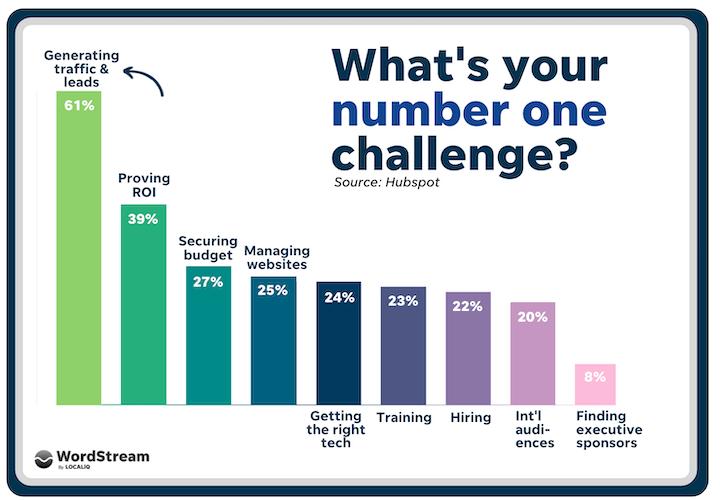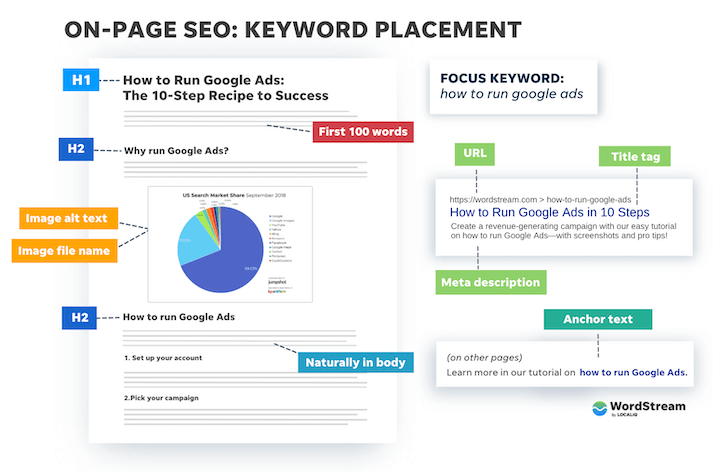Are you looking to elevate your orthodontic practice and attract more potential patients to your website? Look no further! In this article, we will explore the powerful technique of Search Engine Optimization (SEO) and how it can help you drive more traffic to your orthodontic website.
With the increasing competition in the field of orthodontics, it has become essential for practitioners to establish a strong online presence. Utilizing SEO strategies can effectively boost your website’s visibility and attract a higher volume of relevant visitors. Throughout this article, we will discuss various SEO techniques that can significantly enhance your online reach. So, stay tuned to discover the secrets of driving more traffic and potential patients to your orthodontic website with the immense power of SEO.
Understanding the Importance of SEO for Orthodontic Websites
In today’s digital era, having a strong online presence is crucial for the success of any business, including orthodontic practices. As an orthodontist, you might already have a website to showcase your services and expertise. However, simply having a website is not enough. To stand out from the competition and attract more patients, you need to optimize your website for search engines. This is where Search Engine Optimization (SEO) comes into play.

Boost Your Orthodontic Website Traffic
Why SEO is crucial for orthodontic websites
SEO is the process of optimizing a website to rank higher in search engine results when someone searches for a specific keyword or phrase. When potential patients search for orthodontic services in your area, you want your website to appear at the top of the search results. Studies have shown that websites that rank higher receive the majority of clicks, making SEO a crucial aspect of your online marketing strategy.
By implementing effective SEO techniques, you can increase your website’s visibility, drive more traffic, and ultimately attract more patients to your orthodontic practice. Think of SEO as a way to make your website more search-engine friendly and ensure that your target audience can easily find you when they’re in need of orthodontic treatment.
How SEO can drive more traffic to your website
SEO can be a game-changer when it comes to driving organic traffic to your orthodontic website. With proper optimization, you can target specific keywords and phrases that potential patients are searching for. By ranking higher in search engine results for these keywords, you can attract more relevant traffic to your website.
For example, if someone in your area searches for “orthodontist in Philadelphia,” and you have optimized your website for this keyword, there’s a higher chance of your practice appearing in the search results. This means that the person searching is more likely to click on your website and potentially become a patient.
By implementing effective SEO techniques, you are not only increasing your website’s visibility but also targeting the right audience who are actively searching for orthodontic services. This targeted traffic has a higher chance of converting into actual patients, leading to the growth and success of your practice.

Drive Traffic To Your Orthodontic Website
The impact of SEO on online visibility and patient acquisition
In today’s digital age, most people turn to search engines like Google when looking for products or services. This also applies to individuals seeking orthodontic treatment. By investing in SEO, you are increasing your practice’s online visibility and ensuring that potential patients can find you easily.
With the majority of people clicking on the top search results, having a strong SEO strategy can significantly impact your patient acquisition efforts. When your website is optimized for relevant keywords, you are more likely to appear at the top of search results, making it easier for potential patients to discover you and choose your practice over your competitors.
Remember that SEO is an ongoing process. As the algorithms of search engines evolve, you need to stay updated with the latest trends and techniques to maintain and improve your online visibility. Partnering with a reputable SEO agency like Ortho Advertising in Philadelphia can help you stay ahead of the game and ensure that your orthodontic website ranks high and attracts more patients.
Ortho Advertising: Your go-to SEO agency in Philadelphia
Located in Philadelphia, Ortho Advertising specializes in SEO for orthodontic practices. They understand the unique needs and challenges of orthodontists when it comes to online marketing, and they have the expertise and experience to help you maximize your website’s potential.
Ortho Advertising offers a comprehensive range of services to enhance your orthodontic website’s visibility and drive more traffic. From keyword research and analysis to on-page optimization, technical SEO, local SEO strategies, and link building, their team of experts can tailor a strategy specifically for your practice.
By partnering with Ortho Advertising, you can focus on what you do best – providing exceptional orthodontic care – while they take care of optimizing your website and driving more patients to your practice. With their proven track record and dedication to delivering results, Ortho Advertising is your go-to SEO agency in Philadelphia.

Keyword Research and Analysis
For any successful SEO campaign, thorough keyword research and analysis are essential. By identifying relevant keywords for your orthodontic website, you can optimize your content and website elements to target those keywords effectively.
Identifying relevant keywords for orthodontic websites
When conducting keyword research for orthodontic websites, it’s crucial to understand the search intent of your potential patients. What are they searching for and what keywords are they likely to use? Think about the specific treatments or services you offer and the terms patients might use to find information about them.
For example, keywords like “braces,” “Invisalign,” “orthodontic treatment,” “teeth straightening,” and “orthodontic consultation” are common keywords that potential orthodontic patients might use in their searches. By incorporating these relevant keywords into your website content, you can increase your chances of ranking higher in search engine results for those specific queries.
Tools and techniques for effective keyword research
There are several tools available that can help you conduct keyword research for your orthodontic website. Google’s Keyword Planner is a popular choice as it provides valuable insights into search volume, competition, and related keywords. Additionally, tools like SEMrush, Moz, and Ahrefs offer comprehensive keyword research functionalities that can assist you in finding relevant keywords for your orthodontic practice.
In addition to using specialized tools, it’s also important to pay attention to the search suggestions that appear when you start typing in a search engine. These suggestions are based on popular searches related to the keyword you entered, giving you an indication of what people are searching for.
By leveraging these tools and techniques, you can discover the most relevant and high-performing keywords for your orthodontic website, enabling you to optimize your content and drive more targeted traffic.
Competitor analysis to uncover keyword opportunities
Another effective technique for keyword research is competitor analysis. By analyzing the websites of your competitors who are ranking well in search engine results, you can gain insights into the keywords they are targeting.
Start by identifying your top competitors in your local area. Visit their websites and analyze their content to understand the keywords they are incorporating. This can help you uncover keyword opportunities that you may have overlooked initially.
Keep in mind that while it’s important to learn from your competitors, it’s equally crucial to differentiate your orthodontic practice and create unique content that sets you apart. By combining your keyword research findings with your unique expertise and value proposition, you can create compelling content that attracts both search engines and potential patients.
Long-tail keywords and their significance in orthodontic SEO
In addition to targeting broader and more competitive keywords, it’s also important to consider long-tail keywords in your orthodontic SEO strategy. Long-tail keywords are longer and more specific phrases that have less competition but often indicate a higher level of intent from the searcher.
For example, instead of targeting the keyword “braces,” you can target long-tail keywords like “invisible braces in Philadelphia” or “braces for adults in Philadelphia.” These keywords are more specific and have a higher chance of attracting potential patients who are actively looking for the services you offer.
By incorporating long-tail keywords into your content, you can increase your chances of ranking higher in search engine results for these specific queries. This targeted approach can lead to higher conversion rates and attract patients who are more likely to book an appointment with your practice.
On-Page Optimization Techniques
On-page optimization plays a significant role in improving your orthodontic website’s visibility in search engine results. By optimizing various on-page elements, you can make your website more search-engine friendly and increase its chances of ranking higher for relevant keywords.
Optimizing meta tags, titles, and descriptions
Meta tags, titles, and descriptions are crucial on-page elements that directly impact your website’s visibility in search engine results. These are the snippets of information that appear in search engine listings and provide a brief overview of your web page.
To optimize these elements, ensure that your meta tags, titles, and descriptions are relevant, concise, and include your target keywords. This will not only improve your website’s visibility but also provide potential patients with a clear understanding of your content and services.
Creating engaging and keyword-rich content
Content is a crucial factor in both user experience and search engine optimization. By creating high-quality, engaging, and valuable content, you can attract and retain visitors to your orthodontic website.
When creating content, it’s important to incorporate your target keywords naturally. Avoid keyword stuffing, which is the excessive use of keywords in an attempt to manipulate search engine rankings. Instead, focus on providing useful information that answers the questions and concerns of potential patients.
Consider creating informative blog posts that address common orthodontic problems, discuss the latest advancements in orthodontic treatment, or share patient success stories. By providing valuable content that educates and engages your audience, you can establish yourself as a trusted authority in the field of orthodontics.
Enhancing website speed and user experience
Website speed and user experience are important ranking factors in search engine algorithms. A slow-loading website can lead to a higher bounce rate and a negative user experience, which can adversely impact your search engine rankings.
To enhance website speed, optimize your images, minimize the use of excessive animations or plugins, and leverage caching technology. Additionally, ensure that your website is responsive and mobile-friendly, as the majority of online searches are now conducted on mobile devices.
By prioritizing website speed and user experience, you are not only improving your chances of ranking higher in search engine results but also providing a seamless and enjoyable experience to your website visitors.
Implementing schema markup for better search visibility
Schema markup is a type of structured data that you can add to your website’s HTML to provide search engines with additional information about your content. This additional information can be displayed in search engine results in the form of rich snippets, which can enhance your website’s visibility and attract more clicks.
For example, by implementing schema markup, you can display star ratings, reviews, and other relevant information directly in search engine results for your orthodontic practice. This can make your listing more visually appealing and increase its chances of being clicked on.
By utilizing schema markup, you are providing search engines with valuable information about your content, making it easier for them to understand and rank your website. This can ultimately lead to better search visibility and increased traffic to your orthodontic website.

Technical SEO for Orthodontic Websites
In addition to on-page optimization, technical SEO plays a crucial role in improving your website’s visibility and ensuring that search engines can crawl, index, and understand your content effectively.
Mobile optimization and responsive design
With the majority of online searches now conducted on mobile devices, it’s essential to optimize your orthodontic website for mobile users. Implementing a responsive design ensures that your website looks and functions seamlessly across different devices and screen sizes.
Mobile optimization not only improves user experience but also has a direct impact on your search engine rankings. Search engines prioritize websites that provide a positive mobile experience, so investing in mobile optimization can significantly improve your website’s visibility and organic rankings.
Improving website loading time for better user experience
Website loading time is an important factor in both user experience and SEO. A slow-loading website can lead to higher bounce rates, lower conversion rates, and decreased search engine rankings.
To improve website loading time, optimize your images by compressing them without compromising quality, minify your CSS and JavaScript files, and leverage browser caching. Additionally, consider using a Content Delivery Network (CDN) to deliver your website’s content faster to users located in different geographical regions.
By optimizing website loading time, you are providing a better user experience and improving your website’s chances of ranking higher in search engine results.
Fixing crawl errors and broken links
Crawl errors and broken links can negatively impact your website’s visibility and user experience. Search engines may have difficulty crawling and indexing your website if there are broken links or pages that return errors.
Regularly perform website audits to identify and fix any crawl errors or broken links. Tools like Google Search Console can provide you with valuable insights into any issues that may affect your website’s performance.
By fixing crawl errors and broken links, you are ensuring that search engines can effectively crawl and index your website, leading to improved visibility and organic rankings.
Optimizing URL structure and site navigation
A well-optimized URL structure and site navigation can enhance both user experience and search engine visibility. Use descriptive and concise URLs that include relevant keywords. This not only helps search engines understand the content of your web pages but also provides users with a clear indication of what they can expect.
In terms of site navigation, ensure that your website is easy to navigate and that visitors can find the information they are looking for quickly and efficiently. A user-friendly site structure and navigation menu improve the overall user experience and encourage visitors to spend more time on your website.
By optimizing URL structure and site navigation, you are making it easier for both users and search engines to find, understand, and navigate your orthodontic website.
Local SEO Strategies
As an orthodontist, your target audience is likely local to your area. Implementing local SEO strategies can significantly improve your website’s visibility to potential patients in your local community.
Claiming and optimizing Google My Business listing
Google My Business (GMB) is a free tool provided by Google that allows you to manage your online presence in Google Maps and Google Search. Claiming and optimizing your GMB listing is crucial for local SEO as it can improve your visibility in Google’s local pack and attract more local patients.
Ensure that your GMB profile is complete and accurate, including your practice name, address, phone number, website link, and business hours. Add relevant photos and videos to showcase your practice and create posts to keep your listing up to date.
By claiming and optimizing your GMB listing, you can increase your chances of appearing in local search results and attract more patients in your area.
Generating positive online reviews and ratings
Online reviews and ratings are an important factor for potential patients when choosing an orthodontic practice. Positive reviews can significantly impact your online reputation and attract more patients to your practice.
Encourage satisfied patients to leave reviews on platforms like Google, Yelp, and Facebook. Respond to both positive and negative reviews in a timely and professional manner to show that you value patient feedback and are committed to providing excellent care.
By generating positive online reviews and ratings, you are enhancing your online reputation and increasing the likelihood of potential patients choosing your practice over your competitors.
Creating location-specific landing pages
To target specific locations within your area, consider creating location-specific landing pages on your orthodontic website. These pages can provide tailored information about your services in each location and incorporate relevant keywords.
For example, if you have multiple office locations, create separate landing pages for each location to optimize for location-specific keywords. Include information about the services offered at each location, the orthodontists practicing there, and any unique features or amenities.
By creating location-specific landing pages, you can improve your chances of ranking higher in local search results and attract patients from specific areas within your community.
Leveraging local directories and citations
Listing your orthodontic practice in local directories and citations can significantly boost your local SEO efforts. These online directories, such as Yelp, Yellow Pages, and Healthgrades, can improve your online visibility and help potential patients find your practice.
Ensure that your business information is consistent across all directories, including your practice name, address, phone number, and website link. This consistency helps search engines verify the accuracy of your information and improves your chances of appearing in local search results.
By leveraging local directories and citations, you are increasing your online presence in local search results and attracting more potential patients to your orthodontic practice.

Link Building for Orthodontic Websites
Link building is an essential aspect of off-page SEO that involves acquiring high-quality backlinks from authoritative websites. By building a strong backlink profile, you can improve your website’s authority, visibility, and search engine rankings.
Understanding the importance of high-quality backlinks
Backlinks are links from other websites that point back to your orthodontic website. Search engines view backlinks as a signal of your website’s authority and relevance. The more high-quality backlinks you have, the more likely your website is to rank higher in search engine results.
Focus on acquiring backlinks from authoritative websites within the dental and orthodontic industry. For example, guest blogging on reputable dental websites, contributing to relevant orthodontic publications, or partnering with local businesses can all provide opportunities for acquiring high-quality backlinks.
Building relationships with authoritative industry websites
Building relationships with authoritative websites within the dental and orthodontic industry can open doors to potential backlink opportunities. Reach out to industry influencers, bloggers, and organizations and offer to contribute guest posts or collaborate on content.
By building relationships, you not only increase your chances of acquiring valuable backlinks but also establish yourself as a trusted authority within the orthodontic community.
Guest blogging and contributing to relevant orthodontic publications
Guest blogging and contributing to orthodontic publications can be an effective way to build backlinks and showcase your expertise. Research orthodontic blogs, publications, and websites that accept guest contributions and pitch relevant topics that would be of interest to their audience.
Include a link back to your orthodontic website within these guest posts or contributions. This not only provides a valuable backlink but also drives traffic to your website from the readers of these platforms.
Utilizing social media for link building opportunities
Social media platforms can be effective tools for building relationships and acquiring backlinks. Engage with influencers, share valuable content, and participate in relevant conversations within dental and orthodontic communities.
By utilizing social media for link building opportunities, you can not only increase your website’s visibility but also establish connections with influential individuals and organizations in the field.
Website Analytics and Conversion Tracking
Analyzing website analytics and tracking conversions is crucial for measuring the success of your orthodontic SEO efforts. By understanding key performance metrics and customer acquisition, you can make informed decisions to improve your SEO strategy.
Setting up Google Analytics for tracking website traffic
Google Analytics is a powerful tool that provides valuable insights into your website’s performance, including the number of visitors, their demographics, behavior on your website, and more. Setting up Google Analytics for your orthodontic website allows you to track your SEO progress and identify areas for improvement.
Implementing Google Analytics involves adding a tracking code to your website’s HTML. If you’re not familiar with web development, consult with a web developer or an SEO agency like Ortho Advertising to assist you with the setup.
Monitoring key performance metrics for SEO success
Once you have Google Analytics set up, it’s important to monitor key performance metrics to evaluate the success of your SEO efforts. Some key metrics to track include organic search traffic, bounce rate, average session duration, and conversion rate.
Organic search traffic refers to the number of visitors who found your website through organic search engine results. Bounce rate indicates the percentage of visitors who leave your website after viewing only one page. Average session duration measures the average amount of time visitors spend on your website. Conversion rate represents the percentage of website visitors who complete a desired action, such as booking an appointment or filling out a contact form.
By regularly monitoring these key performance metrics, you can identify trends, make data-driven decisions, and optimize your orthodontic website for better results.
Conversion tracking and optimizing customer acquisition
Tracking conversions is essential for optimizing your customer acquisition efforts. By setting up conversion tracking, you can measure the number of website visitors who complete specific actions, such as filling out a contact form or requesting a consultation.
Conversion tracking allows you to assess the effectiveness of your SEO strategy in terms of generating actual leads and acquiring patients. By analyzing conversion data, you can identify areas for improvement, optimize your website for better conversions, and invest in strategies and tactics that drive real results.
Utilizing data to make informed SEO decisions
The data provided by website analytics and conversion tracking is invaluable when it comes to making informed SEO decisions. By analyzing this data, you can gain insights into your website’s performance, understand user behavior, and identify areas for improvement.
For example, if you notice a high bounce rate on a particular page, it may indicate that the content or user experience needs improvement. If you see a low conversion rate on a specific landing page, it may signal a need for optimizing the page to better guide visitors toward the desired action.
By utilizing data, you can continuously refine and optimize your orthodontic SEO strategy, ensuring that your website attracts and converts more potential patients.
Content Marketing and Orthodontic SEO
Content marketing is a powerful strategy that goes hand in hand with SEO. By creating valuable and educational content, you can attract and engage your target audience while enhancing your website’s visibility in search engine results.
Creating valuable and educational blog posts
Blog posts are an excellent way to create valuable and educational content that attracts potential patients to your orthodontic website. Consider topics that address common questions, concerns, and interests of your target audience.
For example, you can write blog posts about the benefits of braces, the different types of orthodontic treatments, or tips for maintaining oral hygiene during orthodontic treatment. By providing valuable information, you position yourself as an expert and build trust with potential patients.
Promoting content through social media channels
Once you have created valuable blog posts or other content, it’s important to promote them through social media channels. Share your content on platforms like Facebook, Twitter, and Instagram to reach a wider audience and increase its visibility.
Encourage your followers to share your content with their networks, as this can significantly extend your reach and attract more potential patients to your orthodontic website.
Utilizing video marketing for higher engagement
Video marketing is an effective way to engage your audience and deliver valuable information in an easily digestible format. Consider creating educational videos about orthodontic treatments, showcasing patient success stories, or providing tips for maintaining oral hygiene during orthodontic treatment.
Upload your videos to platforms like YouTube and share them on your orthodontic website and social media channels. This can increase user engagement, improve your website’s visibility, and attract potential patients who prefer consuming video content.
Guest speaking and sharing expertise at industry events
As an orthodontist, you have valuable expertise that you can share at industry events and conferences. Look for speaking opportunities at dental or orthodontic conferences, local schools, or community events to showcase your knowledge and attract potential patients.
By speaking at industry events, you position yourself as an authority in the field of orthodontics and increase your visibility within both the dental and local communities. This can result in increased website traffic, patient referrals, and practice growth.
Social Media Integration
Incorporating social media into your orthodontic SEO strategy can amplify your online presence and improve your website’s visibility.
Leveraging social media platforms for orthodontic SEO
Social media platforms like Facebook, Twitter, Instagram, and LinkedIn provide opportunities to engage with your target audience and drive traffic to your orthodontic website. Create professional profiles on these platforms and optimize them for relevant keywords and locations.
Regularly post relevant and engaging content on your social media profiles, such as informative articles, before-and-after photos, patient testimonials, and updates about your practice. Encourage your followers to visit your website for more information or to book an appointment.
Creating shareable content for increased visibility
To enhance your social media presence and increase visibility, create shareable content that your followers will find valuable and interesting. This can include infographics, videos, or blog posts that address common orthodontic concerns, oral hygiene tips, or success stories.
When your followers share your content with their networks, it increases your online reach and attracts potential patients who may not have discovered your orthodontic practice otherwise.
Engaging with followers and building a community
Engagement is key when it comes to social media. Respond to comments, questions, and messages from your followers promptly and professionally. This shows that you value their engagement and provides an opportunity to establish a personal connection.
Additionally, consider hosting live Q&A sessions or contests on your social media platforms to encourage interaction and build a community around your orthodontic practice. By fostering engagement and building a sense of community, you create a loyal following that can contribute to the success of your SEO and online marketing efforts.
Utilizing social media advertising for targeted reach
Social media advertising provides targeted reach to potential patients who may be interested in orthodontic services. Platforms like Facebook and Instagram allow you to create ads and target them based on various demographics, interests, and locations.
Consider running social media advertising campaigns to promote specific services, special offers, or events. By reaching the right audience with tailored messages, you can drive relevant traffic to your orthodontic website and increase your chances of acquiring new patients.
Continuous SEO Monitoring and Optimization
SEO is not a one-time effort but an ongoing process. Continuously monitoring and optimizing your orthodontic website ensures that it stays relevant, visible, and competitive in search engine rankings.
Regularly reviewing and updating keyword strategy
Keywords and search trends evolve over time, so it’s important to regularly review and update your keyword strategy. Monitor changes in search volume, competition, and user intent to make informed decisions about the keywords you target.
By staying on top of your keyword strategy, you can optimize your website’s content and ensure that you are targeting the most relevant and valuable keywords for your orthodontic practice.
Monitoring website performance and search rankings
Monitoring your website’s performance and search rankings is crucial for evaluating the effectiveness of your SEO efforts. Track key metrics like organic search traffic, bounce rate, average session duration, conversion rate, and your website’s position in search engine results.
Tools like Google Analytics, Google Search Console, and third-party SEO tools can provide valuable insights into your website’s performance. Analyze this data regularly and identify areas for improvement to continuously optimize your orthodontic website for better results.
Identifying and fixing SEO issues promptly
SEO issues can sometimes arise, affecting your website’s visibility and search engine rankings. It’s important to identify and fix these issues promptly to prevent any negative impacts on your online presence.
Perform regular website audits to identify any crawl errors, broken links, or issues related to website structure, speed, or usability. Address these issues promptly to ensure that your orthodontic website remains search-engine friendly and user-friendly.
Staying updated with algorithm changes and industry trends
Search engine algorithms and SEO best practices constantly evolve. It’s crucial to stay updated with the latest algorithm changes and industry trends to remain competitive in search engine rankings.
Subscribe to reputable SEO blogs and industry newsletters to stay informed about algorithm updates, new SEO techniques, and emerging trends. By staying updated, you can continuously optimize your orthodontic website and adapt your SEO strategy to align with the latest requirements and best practices.
Continuous SEO monitoring and optimization ensure that your orthodontic website remains competitive, visible, and attractive to potential patients, leading to the growth and success of your practice.
In conclusion, understanding the importance of SEO for orthodontic websites is crucial in today’s digital landscape. By implementing effective SEO strategies such as keyword research, on-page optimization, technical SEO, local SEO, link building, website analytics, content marketing, social media integration, and continuous monitoring and optimization, you can enhance your orthodontic website’s visibility, drive more traffic, and attract more patients to your practice. Partnering with a reputable SEO agency like Ortho Advertising in Philadelphia can further amplify your SEO efforts and ensure that your orthodontic practice stands out from the competition in the online space. So don’t wait, start harnessing the power of SEO today and take your orthodontic practice to new heights of success.

